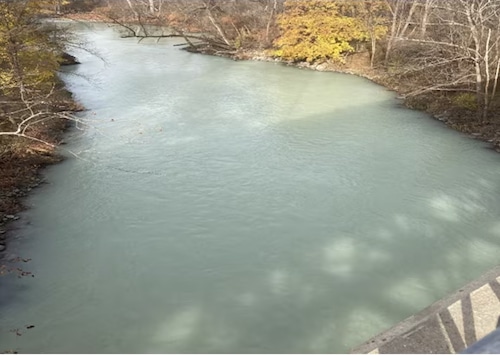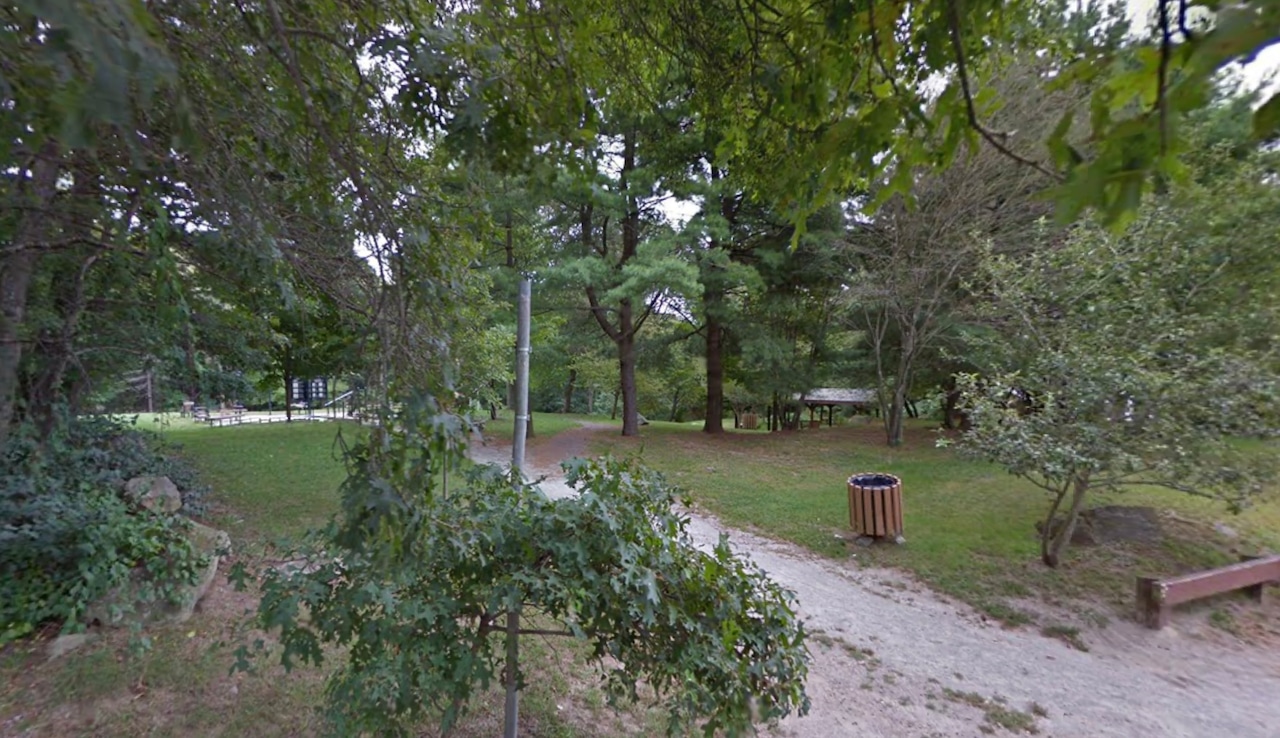In November 2021, part of the Hoosic River, running from the Berkshires into Vermont and New York, turned a cloudy white after an improper wastewater discharge from a limestone product facility in Adams.
The incident, which was followed by dozens of other subsequent discharges in 2022 and 2023, is currently being resolved in federal court via a settlement between state officials and Specialty Minerals Inc., Attorney General Andrea Campbell announced last week.
It wasn’t the first time the 76-mile Hoosic River changed color. Nearly two decades earlier, the river ran red.

In November 2021, Specialty Minerals Inc. in Adams violated the federal Clean Water Act and Massachusetts laws by discharging cloudy wastewater into the Hoosic River, which turned the river white, the state Attorney General’s Office says.Courtesy
On July 2, 2002, an Adams paper mill discharged an undetermined volume of three red dyes into the river, the Bennington Banner reported at the time.
A resident in Pownal, Vermont described it as “blood red.”
“It was the brightest red you’ve ever seen in your life,” Frank Burdick told the Bennington Banner, according to newspaper archives.
Local health officials said the river appeared as though it was dyed with food coloring.
After the dye discharge, the Massachusetts Department of Environmental Protection issued a cease-and-desist order to the now-defunct Curtis Fine Papers “after a process meant to eliminate color from paper manufacturing discharge failed,” the Banner reported.
Within days, the Vermont Health Department identified two of the three red dyes polluting the Hoosic River as non-hazardous, but continued to maintain a health watch. New York health officials more intensely messaged that one of the identified dyes could cause skin or eye irritation in high concentrations.
The Bennington Banner reported that residents were warned not to draw drinking or irrigation water, swim, or fish for consumption in the Hoosic River until its color returned to normal.
Ultimately, all three dyes were determined to be non-toxic.
The dye spill launched a kerfuffle between state agencies over untimely notification — New York officials claimed they weren’t informed about it by MassDEP until two days later.
Because of the communication issues between states, the Banner reported, residents in Pownal, Vermont, and Hoosick, New York, weren’t notified of the originating accident at the Adams paper mill for two-to-three days.
Today, the Massachusetts section of the Hoosic River is designated as a “class B” water body — “a habitat for fish, other aquatic life, and wildlife, including for their reproduction, migration, growth and other critical functions, and for primary and secondary contact recreation.”






